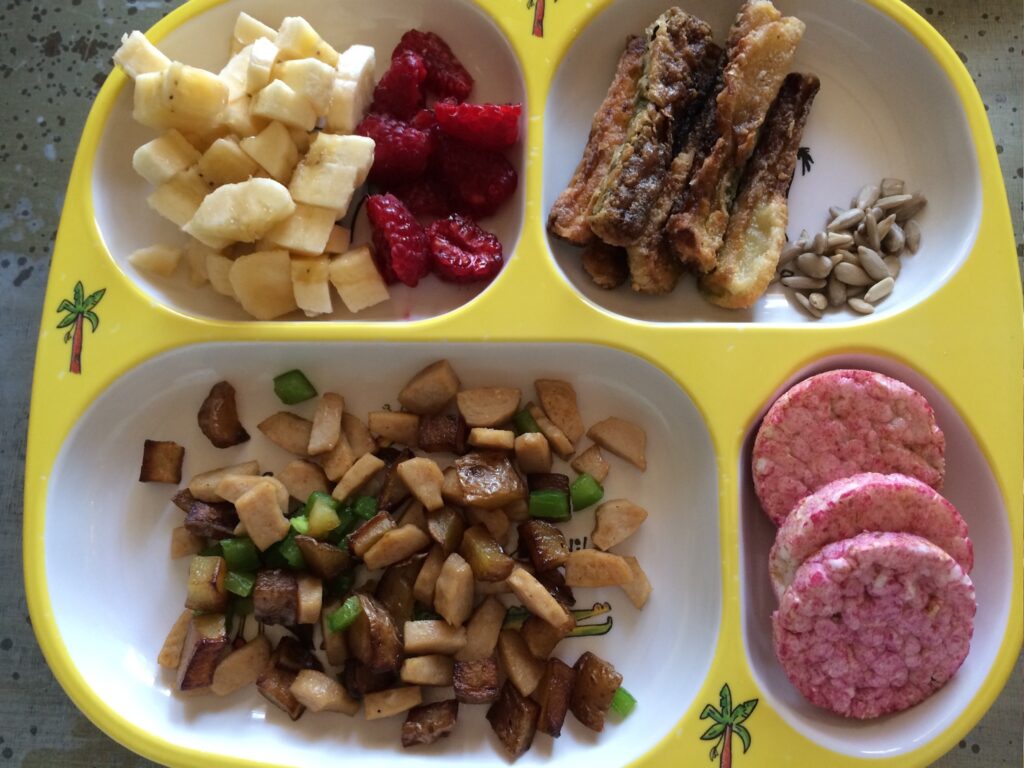The Food Thing: A Mom’s Real Talk on Autism, Safe Foods, and Surviving the Village
Let’s talk about the food thing.
If you’re new to the autism journey, I can almost guarantee you’ve got a village in your ear—grandmas, aunts, random friends, and even strangers at the park who have no problem weighing in while their kid licks a swing—all chiming in with their unsolicited opinions:
“Pizza and mac and cheese and chicken nuggets every day?! That’s not nutritious! They need vitamins, fresh veggies, and nonna’s liver and onions like in the old country!”
Here’s the deal: Autism and safe foods are for real. (If you don’t know what a ‘safe food’ is, it’s a food that feels comfortable, familiar, and manageable to eat for someone with sensory sensitivities or preferences, often providing a sense of security during meals.)
If your kid eats the same three things every day, I get it. If you’re tired of explaining sensory issues to people who think you’re just being too soft, welcome to the club.
My Food Roots: From Hamburger Helper to Super Nutrition
I wasn’t born into some kale-and-quinoa household. I grew up on Southern potluck church food, Hamburger Helper, and the golden era of McDonald’s in the ‘70s. Later, I learned to bake with the neighborhood grannies because, let’s be real, they thought I’d need a hobby while my future astronaut husband (their words, not mine) earned the paycheck. Patriarchy aside, it gave me a foundation for loving food—comfort food.
Fast forward to my adult life: When I got pregnant with twins, nutrition became a big deal. Their dad and I weren’t just about looking good and working out (okay, we were also about that), but we wanted to give our boys the best possible start. We were those people juicing everything, eating organic, and Googling how to not screw up our kids before they were born.
Our doctor was on board with all of it—nutrition protocols, supplements, the works. We went all-in on “Super Nutrition for Babies”, a cookbook designed to help kids avoid allergies and sugar addiction while actually craving green foods—yes, green foods. Did it work? Yes! Well…
…Then Autism Entered the Picture
One of my boys had emergency stomach surgery at six weeks old. My other son had colic (relentless, extreme crying) so intense I thought I’d lose my mind despite breastfeeding like it was my full-time job. They had G.I. issues—diarrhea, microbiome imbalance, you name it.
When the autism signs began to show, food became a whole thing. Back then, I didn’t even have the language to explain what I was seeing. It wasn’t just picky eating—it was outright aversion. To smells. To textures. To foods touching. (Hey, I get it– I’m actually the same way.) Even to the thought of holding a banana peel. They went from happily eating overnight-soaked (aka “activated”) almonds with Celtic sea salt, home-milled buckwheat groats (thanks to that hella cool KitchenAid attachment), and beef and broccoli with Chinese five spice—one of their favorites—to wildly different habits. One devoured four bananas, smearing them everywhere, while the other inhaled grass-fed, nitrate-free hot dogs and crackers like his life depended on it.

I Started Noticing Patterns
The ramp-up to preschool was so overwhelming for my son that he couldn’t face it without stuffing an entire bag of Happy Baby Berry Rice Crackers just to let me carry him through the door. His gait had become wobbly, and not long after, we learned why—low muscle tone that required OT. This ritual went on for years, with him hard-core gripping a sippy cup smoothie like it was his lifeline. It wasn’t just holding it; it was a daily, intense, white-knuckle kind of grip that told me just how much he needed that small piece of comfort to get through the chaos. (Hey, Stanley Cup moms, I see you!) Why? Looking back, it was stress relief. It was comfort. It was his way of saying, “This feels safe in a world that doesn’t.”
Food Became Our Language
When the boys’ immune issues ramped up—fevers, constant sickness, and a kind of “brain fog” that felt more like being locked in their own world—I became a regular at doctor after doctor’s office. Some specialists recommended running tests for allergies to dairy, gluten, food dyes, and preservatives. The results? Mind-blowing. Turns out, those colorful food dyes and sneaky preservatives—hiding in snacks, sausages, and all the nitrates—were triggers. One of my boys, who lived on snacks and treated actual meals like they were the enemy, was especially affected.
At the same time, I began meeting other caregivers—parents and therapists—who followed a Paleo diet themselves for their own health reasons. They swore by the approach, but I quickly realized how much textures alone could complicate the process for kids like mine. Still, I kept hearing the same advice: “Keep putting green on the plate. Just put it there.” Even if it never gets touched, the idea was that one day, they might surprise you.
With the support of a therapist, we started experimenting with ways to make trying new foods less overwhelming. Sometimes that meant presenting something as an “appetizer,” giving it a fancy introduction to make it feel special. Other times, it was about pairing the new with the familiar—sneaking vitamins or supplements into applesauce or coconut yogurt to mask the taste. One doctor explained it like this: Eventually, their bodies will get the nutrients they need, and they’ll start to crave those foods. And as impossible as that sounded at the time, it actually happened.
Over time, we also learned to cook together, which made a huge difference. We started experimenting with simple, sensory-friendly recipes—like a sheet pan of sweet potato crackers and kale chips. I’m not a big kale lover myself, but they actually tasted great, especially when we made them together. Watching my boys engage with the process and try something they had a hand in creating was a win I’ll never forget.
The Truth About Food and Autism
Here’s what I know now: Food is a thing for all of us. Coffee first thing in the morning? That’s your safe food. Your kid’s mac-and-cheese-on-repeat, chicken tenders, fingers, or nuggets? Same thing. It’s not about forcing them to change; it’s about supporting them where they are.
Food doesn’t have to be the enemy. It’s not about perfection or “fixing” anyone. For us, it became a way to manage symptoms, build routines, and sometimes, just survive the day.
This is the start of a bigger conversation I want to have with all of you. I’m going to share what worked for us—not as a prescription but as a story. Because if I’ve learned anything, it’s that no two families’ journeys are the same.
Sounds expensive, doesn’t it? There are value-based solutions that are way more cost-effective with a pantry that supports the whole picture.
So if you’re in the trenches of the pizza-and-crackers diet phase, know this: You’re doing great. And if anyone tells you otherwise, just smile and send them a bag of rice crackers.
More on this soon—recipes, tips, and lived experiences from my kitchen to yours. Stay tuned!



